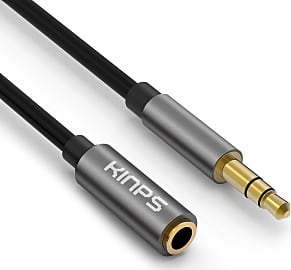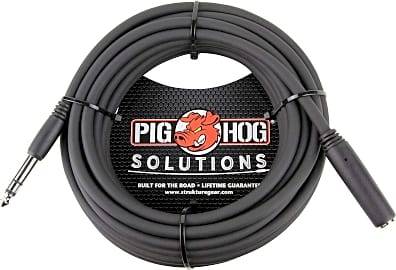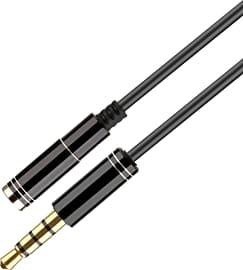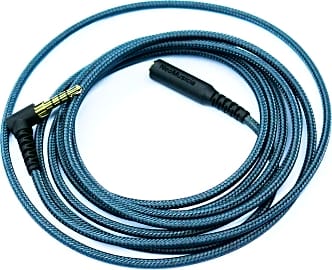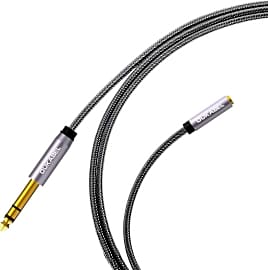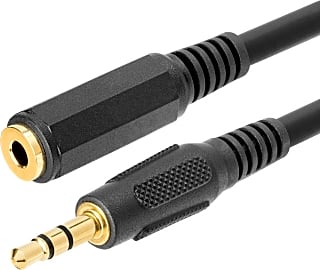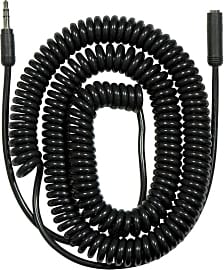The 10 Best Headphone Extension Cords

This wiki has been updated 26 times since it was first published in February of 2019. Expand your range with one of these headphone extension cords, which give you more freedom to move around while listening to music and let you connect devices to your stereo system from across the room. Our list includes options that come in a wide variety of lengths to suit just about any application, along with a few 4-pole cables that will allow you to use mic and volume controls. When users buy our independently chosen editorial choices, we may earn commissions to help fund the Wiki.
Editor's Notes
October 01, 2020:
When selecting a headphone extension cable one of the most important things to determine is whether or not you need a 3- or 4-pole model. The amount of poles for a given option is most easily determined by the amount of black lines on the male side of the cord. If there are only two black rings it most likely has 3-poles, and in turn those with three rings are most often of the 4-pole variety, though if you want to be extra sure you can usually find out which kind it is on the manufacturer's product page. While 3-pole selections are perfectly adequate for transmitting stereo audio, you will probably need a 4-pole cable if your headphones feature any sort of inline microphone or volume controls.
These days many smartphones and media players are able to take advantage of such features, so 4-pole options such as the DuKabel Lossless, KabelDirekt Pro Series, Archeer Slim, and KetDirect Tangle-Free are going to be a great selection for most people, especially since they are often the same price as their audio-only counterparts. For this reason we removed a few more basic 3-pole models in favor of a couple specialized choices that users may find are actually better suited for their specific needs than a more typical option would be. For instance, the GE Universal Extension uses a coiled design to maintain tension on your cable regardless of your distance from the audio source. This helps to prevent you walking over and accidentally tangling it during an activity such as DJing, or any other situation where you may be moving back and forth between different tasks in the same space.
The Dukabel Top Series is another specialized cable that's great for people who frequently deal with pro-audio devices such as guitar amplifiers, mixers, keyboards, or even high-quality stereos. While modern headphones have almost ubiquitously moved on to 3.5-mm connections many of the aforementioned products still utilize 1/4-inch audio jacks, and this selection allows the two to work together without fuss. Of course the same result can be achieved with a 3.5-mm to 1/4-inch adapter, but these small pieces can be easy to lose, plus there's no point in using a high-quality headphone extension cord if you're going to pair it with a cheap adapter.
March 16, 2019:
The best type of cable for you will depend on how you plan to use it. First and foremost, be aware that many headphone extension cords have 3-pole connectors. If your headphones have a mic and remote (the buttons attached to the cord that allow you to pause, play, change the volume, etc.), you'll need a 4-pole cord in order for these functions to work. The KetDirect Tangle-Free, Archeer Slim, KabelDirekt Pro Series, and DuKabel Lossless all have 4-pole connectors, and the latter offers some of the best sound quality you can find for the price point. An easy way to tell whether a cable is 3- or 4-pole is to count the horizontal stripes on the male end — a 3-pole cable will have two stripes, while a 4-pole cable will have three. If you don't use the mic or remote functions on your headphones, the FosPower Audio and Kinps Auxiliary are 3-pole options that provide good sound with minimal signal loss or interference. For musicians, or anyone else who needs something extra durable, the PigHog Cable is a heavy-duty option that's made to take a lot of abuse while still transmitting the source audio with no distortion. But, since it's designed for professional/studio equipment, it has 1/4" connectors, so you'll need an adapter to use it with most regular headphones.




